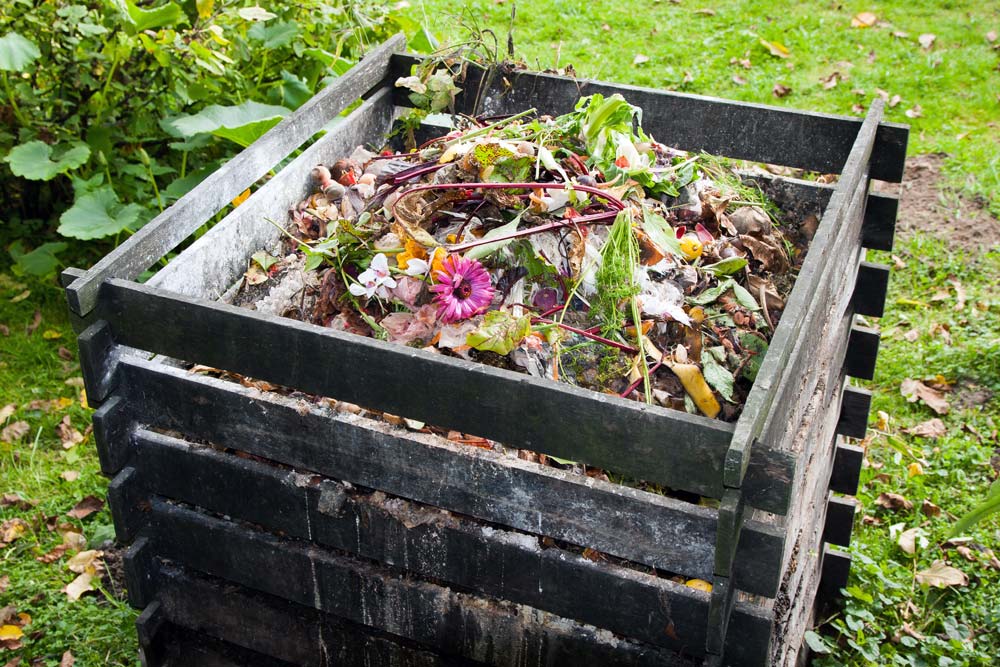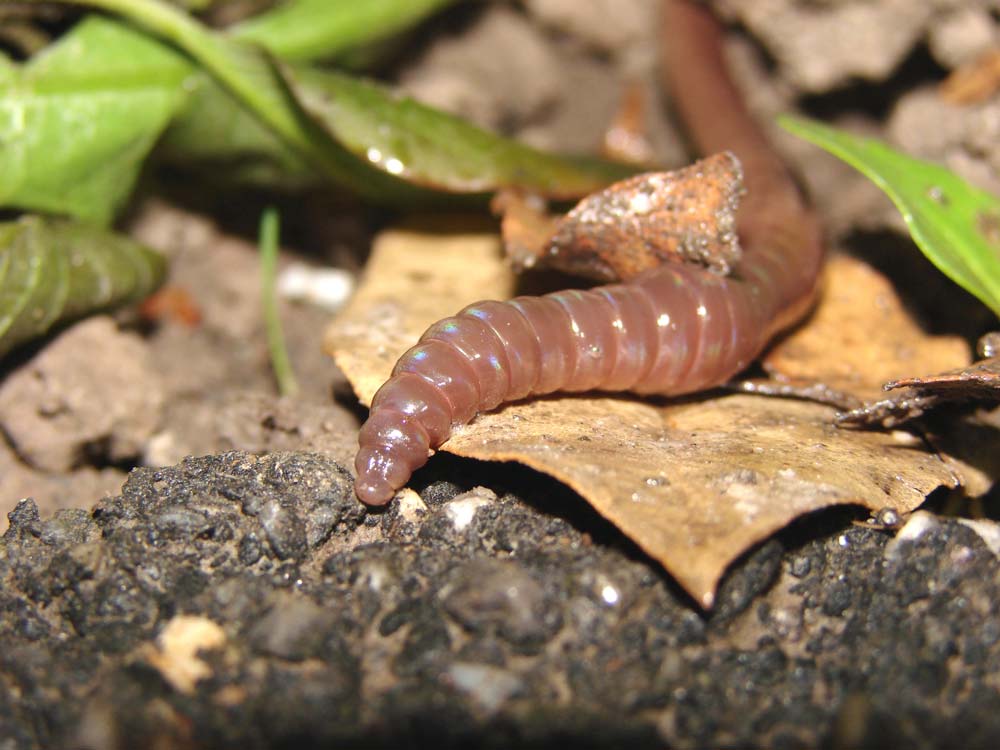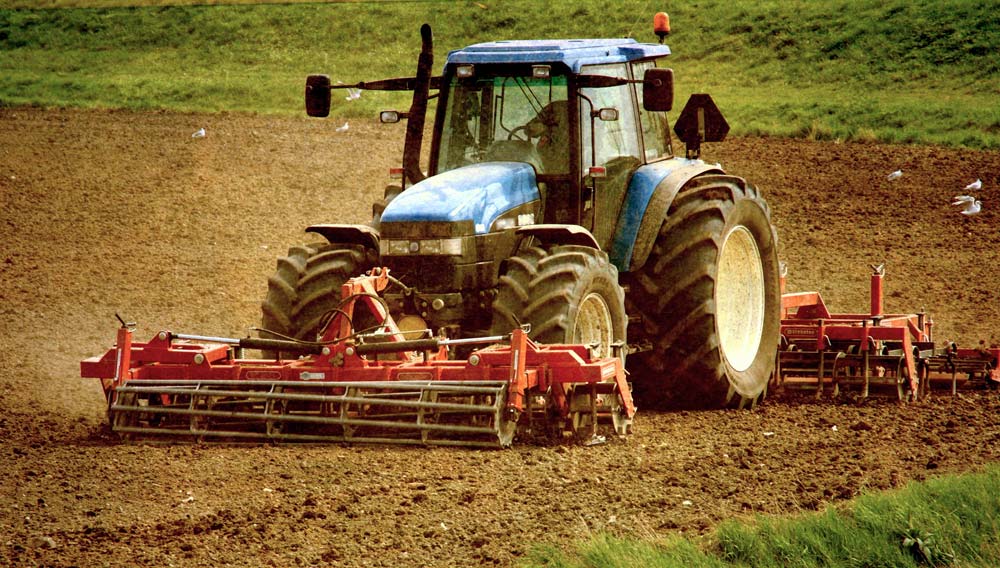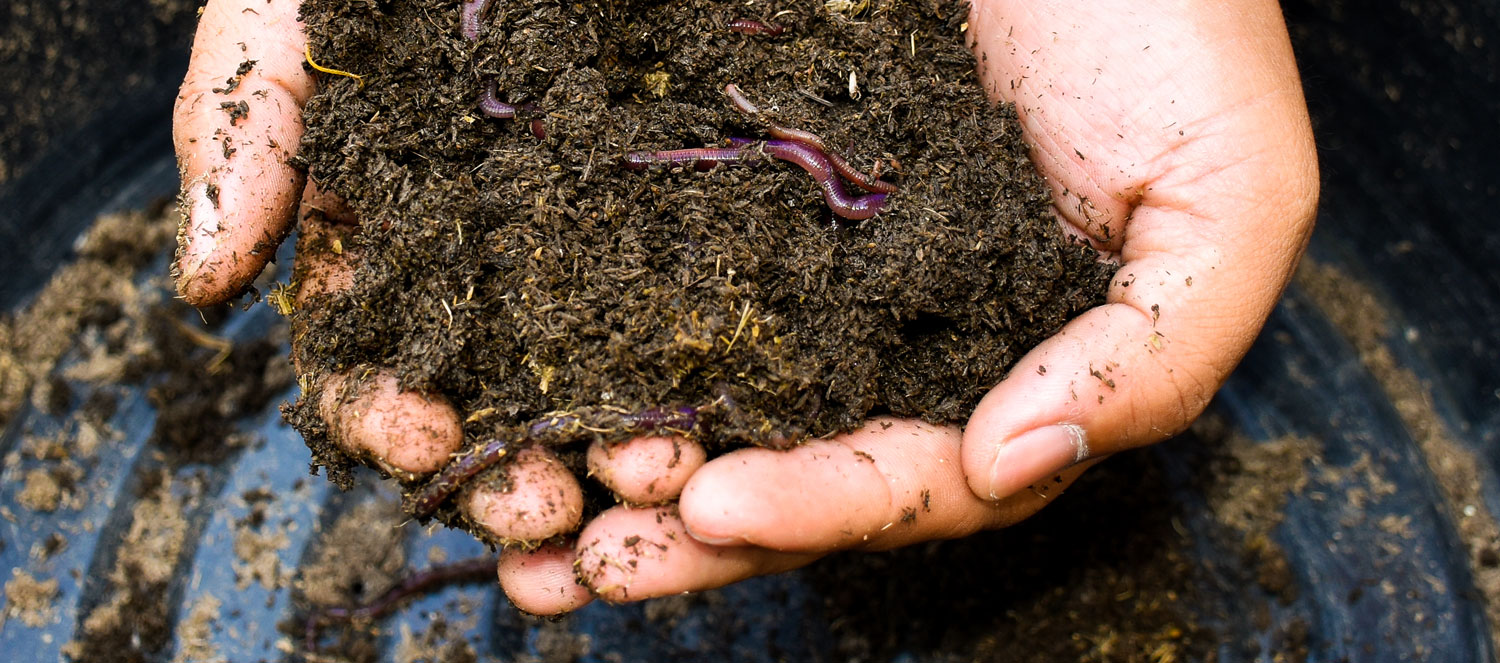Have you heard the saying, “You can’t build a great building on a weak foundation?” Well cultivating a thriving garden is the same way. It all starts with strong groundwork (pun intended). If you’re wondering how to improve soil health, then you’ve come to the right place.
Soil is the foundation of your garden. It’s what nourishes your plants, allowing you to produce those crisp cucumbers and juicy tomatoes. Soil health boils down to three key factors which can be easily affected by your gardening practices.
So, how do you make sure that you’re maintaining and improving the health of your soil? The first step is understanding how each of the key components of healthy soil (nutrients, living organisms, and soil structure) play a role in supporting plant growth. Then we can work on managing them.
Why Does Soil Health Matter?
Soil is a diverse ecosystem. It’s a complex food web and it helps control the supply of nutrients, air, and water to the plants in your garden. Healthy soil supports plant growth and is capable of sustaining agricultural production.
Whether you’re a cash-crop farmer, or just looking to improve the soil health for your backyard garden, you want to make sure that all of your hard work pays off at the end of the day. Imagine slaving away, planting, watering, weeding, day in and day out, only to produce a few small vegetables, when you know your garden has the potential to do so much more.
If you have a commercial growing operation, this is even more important. Product is profit, and healthy soil helps your growing operation with both. Healthy soil improves your productivity and therefore your profitability. It can also reduce your inputs, reducing growing costs.
And it’s not just about improving your soil health to boost productivity, it’s important to maintain good quality soil as well. Proper soil management ensures that this dynamic system that you’re harnessing is sustainable, and that the valuable resources within your soil are preserved for future growing seasons.
What Are the Key Factors that You Need to Consider?
The key factors of soil health come down to three main categories: chemical, biological, and physical health. Soil that’s lacking in any of these areas will be limiting your garden from reaching its full potential. We’ll explain why each one of them is important, and how they interact and rely on one another.
Chemical Health: Nutrients
This one is usually pretty obvious for people. Ask any avid gardener what they need to provide for their plants, and they’ll tell you sunlight, water, and proper nutrients. But understanding what those nutrients are and how they’re stored in the soil, is vital to managing soil health.
The chemical health of your soil is always changing. Nutrients are constantly being added, consumed, removed, or changed within your soil. This is known as nutrient cycling. But regardless of the dynamic nature of the nutrients, you always need both organic and inorganic nutrients in your soil to promote plant growth. How those nutrients are stored, determines when they will be available for your plants to use.
Organic nutrients are those carbon-containing compounds that are typically found in organic matter, like decomposing plant matter or manure. They might also be available to your plants dissolved in the water that they take up from the soil.

Organic matter in your soil can also store important inorganic compounds like nitrogen and phosphorus, which are very important to your plants. But it’s critical to understand that the nutrients in organic matter are not always immediately available to your plants. Most of them rely on soil organisms to convert that organic matter into different forms through decomposition and mineralization. These nutrients can be utilized by your plants in the near or distant future depending on the biological activity of the soil.
Inorganic compounds can also be dissolved in water or stored at cation exchange sites. Cation exchange sites are negatively charged locations within the soil that attract and hold the positively charged compounds like calcium and magnesium. Nutrients stored at cation exchange sites are readily available to plants in the near future.
Soil minerals are another form of nutrient storage. But these nutrients are only available to your plants in the very distant future. They aren’t immediately accessible.
Biological Health: Living Organisms
Soil contains a network of organisms that make up its biological health and create the living ecosystem that allows your plants to grow. These organisms are diverse and range from microbes like bacteria and fungi, to larger insects like millipedes, ants, and earthworms.

These organisms work together with the soil and form symbiotic relationships. Roots produce sugars that feed microbes, and in return those microbes give back nutrients to the soil. Soil organisms convert organic matter and other compounds into usable nutrients for your plants. They also naturally control pests.
Earthworms and other larger organisms in your soil help to create and maintain the physical characteristics of the soil. They can develop macropores within the soil as they move through it, basically like large tunnels which aid in root and nutrient distribution.
Physical Health: Soil Structure
The third and final factor of soil health to consider is soil structure. The physical structure of your soil is essential to your garden. Good soil structure promotes proper aeration, water distribution, and drainage.
Larger macropores help regulate air movement through the soil, and the smaller micropores are necessary to retain water. Good soil structure also allows plant roots to grow freely though the soil pores, rather than restricting their movement. A strong physical network can withstand soil erosion and compaction.
Aggregates within the soil, areas that stick together more firmly, can support chemical health too. They help regulate nutrient distribution by storing organic matter, and not allowing it to get depleted too quickly by the soil organisms.
What Soil Management Strategies Can You Implement in Your Garden?
Add Nutrients
This soil management strategy is directly targeted at improving chemical health. To offset the consumption of nutrients by your plants, or the loss of those same nutrients to the environment, you can add nutrients to your soil. These inputs also fall into the same categories of organic and inorganic matter.
To add organic nutrients and organic matter to your soil, you can add compost or manure. Composting is an easy way to introduce decomposing living matter to your soil, that can be done in almost any garden or backyard. Adding organic matter not only adds nutrients, but it also adds moisture to your soil.
The addition of organic matter to your soil is a great way of increasing cation exchange sites. So, it provides both readily accessible nutrients and the more sustained release nutrients from decomposition.
Fertilizers are the most common form of inorganic soil additions. They are a great source of nitrogen, phosphorous, and potassium for your soil. Liming agents can also help neutralize acidic soils, which can be detrimental to bacteria and cause some components to become toxic to plant roots. The right pH in your soil will improve the availability of nutrients.
Nutrient addition should be well managed. Fertilizer, or organic matter, should be added consciously, using the correct amount at the right time to achieve ideal plant growth. Additions should meet the needs of the plants, but avoid excess. Nutrient Stewardship recommends following the 4Rs:
- Right source
- Right quantity
- Right time
- Right location
It can be helpful to periodically test your soil health for chemical nutrient composition as well. This will tell you whether you’re depriving your plants of some key nutrients, or if you’re actually overdosing the soil with the wrong rate of additives.
Reduce Soil Disturbance
Reducing soil tillage maintains good physical structure of the soil which is beneficial to roots and organisms. Tilling breaks up the aggregates in the soil, collapsing those important macropores.
With less inherent structure, the soil compacts and makes it harder for the plant roots to penetrate through. It’s harder for the plants to grow because they can’t reach the nutrients and water that they need in the soil.
Tillage and compaction also disrupt the important work of soil organisms. Earthworm burrowing is interrupted and the valuable networks created between root systems and their symbiotic microbes may need to be recreated.
Reduced soil disturbance prevents erosion. By protecting the strong soil structure, there is less valuable topsoil that is loose and susceptible to being blown or washed away in an outdoor garden.

Minimizing disturbances helps regulate nutrient depletion. Tilling oxygenates the soil which speeds up biological activity. Think about how you promote decomposition in your compost pile. You mix the pile for aeration and to expose more of the organic matter. This is exactly what you want to avoid in your soil. The more organic matter you expose by physically breaking apart soil aggregates, the more quickly those nutrients are going to be used up.
Sometimes tilling is still necessary, for example as a form of weed control, so if you can’t reduce the disturbance any further, make sure to offset it by adding additional organic matter to your soil through manure or compost.
And watch out for other causes of soil compaction. Additional compaction from heavy field equipment may not be a concern for indoor greenhouse growers or smaller backyard gardens, but you can still help maintain soil structure by avoiding walking through your garden when it is wet.
Rotate Crops
Growing various plants in your garden each season can help control nutrient depletion and promote biodiversity in the soil. It limits the demand and stress on your soil ecosystem. Crop rotation therefore improves the overall health of your plants.
Different plants use resources at different rates. By changing it up from season to season, you’re less likely to have a nutrient deficiency or nutrient excess in your soil. And this is good for your wallet, because it means fewer nutrient additions, which can cost you money.
Different plants also promote different soil organisms. If you want diversity in your soil, you have to start with diversity in your crops. At least as much diversity and rotation as is feasible in your growing situation. Soil microbes flourish with diversity.
Rotating crops prevents weed growth and is a natural form of pest control. By constantly changing the environment, you don’t give pests or plant diseases enough time to grow.
Plant Cover Crops and Manage Plant Residue
Cover crops are a great way to add plant diversity while also keeping your soil covered for as long as possible throughout the year. While this is often considered by commercial growers producing cash crops, it can equally benefit the health of your garden soil.
Keeping soil covered during the winter season reduces soil losses to erosion in outdoor growing environments, but it can also prevent compaction and promote a healthy soil structure. Living root systems improve aggregate formation in the soil, and are an active microbial site, so they help maintain biological health too.
Cover crops are usually used as organic matter for your soil, increasing nutrients for the next growing season. The residual plant matter is allowed to decompose with the help of soil organisms and nutrients are returned back into the soil. Residue management can significantly decrease the amount of organic matter that needs to be added to your soil.
Plant residue further supports soil coverage during the non-growing season. Leaving residue on the soil surface helps maintain soil moisture and provides a habitat for larger organisms. It also makes it harder for weeds to grow in your garden.
Recap
The four strategies presented here, nutrient addition, reduced soil disruption, crop rotation, and the management of cover crops and plant residues can be used either individually or all together as a robust plan for improving soil health in your garden. They support healthy soil by targeting the three main aspects that promote plant growth: proper nutrients, symbiotic organisms, and a strong soil structure.
At the end of the day, the health of your garden relies on the health of your soil. It’s at the core of the entire system. By understanding the details of this complex network, you’re now better equipped to enhance your soil health, and see the true fruits of your labor in the garden.
